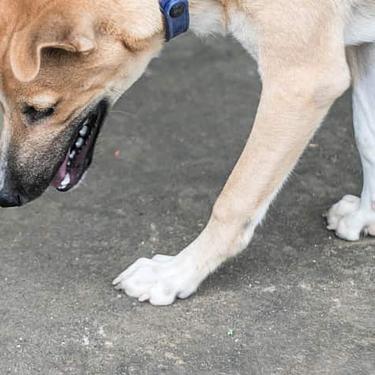
-
Find the right food for your petTake this quiz to see which food may be the best for your furry friend.Find the right food for your petTake this quiz to see which food may be the best for your furry friend.Featured products
 Adult Small & Mini Lamb Meal & Brown Rice Recipe Dog Food
Adult Small & Mini Lamb Meal & Brown Rice Recipe Dog FoodFor the faster metabolism of Small & Mini dogs
Shop Now Hill's Science Diet Adult Oral Care Chicken, Brown Rice & Barley Recipe Dog Food
Hill's Science Diet Adult Oral Care Chicken, Brown Rice & Barley Recipe Dog FoodClinically proven kibble technology to reduce plaque & tartar build-up
Shop Now Adult 7+ Small & Mini Chicken & Brown Rice Recipe Dog Food
Adult 7+ Small & Mini Chicken & Brown Rice Recipe Dog FoodFor the unique nutritional needs of mature Small & Mini dogs
Shop NowFeatured products Adult Indoor Chicken Recipe Cat Food
Adult Indoor Chicken Recipe Cat FoodSupports energy level and beautiful fur in indoor cats
Shop Now Adult Urinary Hairball Control Chicken & Rice Recipe Cat Food
Adult Urinary Hairball Control Chicken & Rice Recipe Cat FoodActively supports the health of the whole urinary system
Shop Now Hill's Science Diet Adult Sensitive Stomach & Skin Dog Food
Hill's Science Diet Adult Sensitive Stomach & Skin Dog FoodHighly digestible recipe, gentle on stomachs. Nourishes skin & promotes a lustrous coat
Shop Now -
Featured articles
 Easy DIY Dog & Cat Toys: Nine of Our Favorites
Easy DIY Dog & Cat Toys: Nine of Our FavoritesBrowse this comprehensive guide for several of our favorite DIY dog and cat toys that are sure to put a little pep in your pet's step.
Read More 15 Pet-Friendly Cities Ideal for a US Road Trip
15 Pet-Friendly Cities Ideal for a US Road TripCheck out our list of pet-friendly U.S. cities that are excellent travel options, offering off-leash dog parks and pet-friendly restaurants & hotels.
Read More My Pet Ate a Lizard — What Should I Do?
My Pet Ate a Lizard — What Should I Do?Learn what to do if your pet eats a lizard, including whether they can be toxic and symptoms to keep an eye on when they've swallowed one.
Read More -


It's time for your kitty's wellness check, but you keep putting it off because getting her into her carrier is such a Herculean task. Maybe you still have battle scars from the last time you had to wrestle her into it. It's understandable not to want to go through that again, but your cat still needs to see the veterinarian. Keep reading to learn how to get a cat in a carrier, as well as how to keep a cat calm on the car ride to the vet.
Acclimating Your Cat to a Carrier

If you're in the habit of storing your cat carrier out of sight until it's needed, your kitty is likely to be tipped off that something "bad" is about to happen the moment you bring it out of storage. She's likely to become anxious at the mere sight of the carrier if the only time she ever sees it is when it's time to go to the vet. Instead, VetBabble recommends acclimating your cat to the carrier by following these steps:
- At least two weeks before the trip, wash and dry the carrier, making sure it doesn't have any musty or chemical smells that your kitty might find offensive.
- Place the carrier in plain sight, within her reach. Leave the door open.
- Place a blanket, towel, or bed — preferably one that bears your cat's scent — inside the carrier to make it more inviting.
- Place your kitty's favorite toys and treats inside the carrier.
- Place her food and water dishes next to the carrier. As she becomes more comfortable with the carrier's presence, try moving her dishes inside.
Following these steps will help to build positive associations with the carrier that should help make it much easier to coax her inside it. What's more, if the carrier is already part of the scenery, your furry friend's anxiety won't be triggered by a sudden appearance on the day of her appointment.
How to Get a Cat in a Carrier
If you follow the steps above, it's possible that when the time comes, your kitty will enter it on her own with only a little coaxing from you. But then again, cats will be cats. Sensing that you want her inside it might be enough to make her decide she wants no part of it. Here's how to get a cat in a carrier if she's still putting up resistance:
- Place the carrier on its end with the door pointing toward the ceiling, leaving the door open.
- Place a towel over your cat, gently picking her up and wrapping the towel around her tightly enough to confine her limbs but not so tightly it will restrict her breathing.
- Quickly lower the towel-wrapped cat into the carrier and shut the door. Don't worry about removing the towel.
It may help to first move the carrier to a small space, such as a bathroom, and shut yourself and the kitty inside before following these steps. A practice run a day or two before travel day will give your pet time to get used to the carrier's new placement and help prevent her from becoming suspicious.
If one kind of cat carrier is too much of a struggle to use, you can also try a different model. Many pet supply stores offer stroller- and messenger bag-style carriers, and your cat may show a preference for entering through a "side door" or a flap on the top.


Tasty Tips
How to Keep a Cat Calm
When taking your furball to the vet, getting her into the carrier is only half the battle. Keeping her calm during both the car ride and the office visit can also be a challenge. Here are some tips to help calm your anxious cat:
- Spritz a towel or blanket with a synthetic cat pheromone spray and place it inside the carrier with your cat.
- The Spruce Pets recommends acclimating your cat to car rides in the weeks leading up to her appointment by routinely taking her on short car rides around the block.
- Try to stay in her line of sight, suggests Catster. While it's safest to buckle the carrier into the back seat, if possible, try to position it so that she can see you. Talk to her to reassure her during the trip.
- If none of these tips work and your kitty experiences extreme anxiety that makes examinations difficult, talk to your vet about sedatives you can give her prior to the trip to keep her relaxed.
Removing Your Cat from the Carrier

By the time you and your cat arrive at the vet and it's time for the exam, she may be worked up enough to require special handling to get her out of the carrier. If she appears calm, talk to her in a soothing voice and let her sniff your fingers through the door before opening it. Once you open the door, place one hand on her head to keep her facing away from you, and wrap your other arm around her body, supporting her body with your hand and forearm like a football. If she is mildly anxious or fearful, it might be necessary to gently grab the back of the neck and restrain her forepaws with your free hand to keep her from scratching. If possible, have the vet or veterinary assistant help by supporting the cat's body weight as you remove her from the carrier. Otherwise, lift her as quickly and gently as you can and tuck her body between your side and your elbow. If your little gal is showing a lot of fear or aggression, you may need to once again wrap her in a towel before removing her from the carrier.
Getting your cat safely to the vet can be an ordeal. If she appears healthy, regular wellness checks might seem like more trouble than they're worth. But cats are prone to a number of illnesses, including various cancers, infections, urinary problems and endocrine disorders, especially as they age. Regular checkups can help catch these illnesses early enough to make a significant impact on your cat's quality of life. With a little preparation, getting your cat to the vet on a regular basis doesn't have to feel like waging a battle every time you go.


Jean Marie Bauhaus is a pet parent, pet blogger, and novelist from Tulsa, Oklahoma, where she usually writes under the supervision of a lapful of fur babies.
Related products
Related articles

Put your cat on a diet without them knowing
Our low calorie formula helps you control your cat's weight. It's packed with high-quality protein for building lean muscles, and made with purposeful ingredients for a flavorful, nutritious meal. Clinically proven antioxidants, Vitamin C+E, help promote a healthy immune system.
Put your cat on a diet without them knowing
Our low calorie formula helps you control your cat's weight. It's packed with high-quality protein for building lean muscles, and made with purposeful ingredients for a flavorful, nutritious meal. Clinically proven antioxidants, Vitamin C+E, help promote a healthy immune system.

